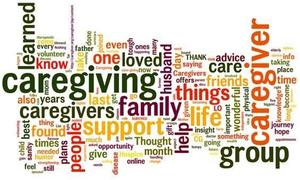 Clearly many caregivers are missing out on useful technology. According to the new AARP Caregiving in the US report, utilization of useful technologies, detailed in a brief report attached here, that could help with care of either children or older adults is below 50% other than smart home tech. Maybe that is the smart doorbell? Smart TV? --which is just about all you can buy. Only 10% of caregivers say they own home health safety devices, which probably include a pendant with fall detection or an in-home fall detection device. If these caregivers are living with the older adult, perhaps that makes sense. If not, perhaps they do not know what they don’t know. Only a third say they use smart home technology (for lighting? Temperature control? Other?). Perhaps the AARP site for caregivers would be of benefit. Lots of information there.
Clearly many caregivers are missing out on useful technology. According to the new AARP Caregiving in the US report, utilization of useful technologies, detailed in a brief report attached here, that could help with care of either children or older adults is below 50% other than smart home tech. Maybe that is the smart doorbell? Smart TV? --which is just about all you can buy. Only 10% of caregivers say they own home health safety devices, which probably include a pendant with fall detection or an in-home fall detection device. If these caregivers are living with the older adult, perhaps that makes sense. If not, perhaps they do not know what they don’t know. Only a third say they use smart home technology (for lighting? Temperature control? Other?). Perhaps the AARP site for caregivers would be of benefit. Lots of information there.
The larger report does a great job of identifying and segmenting the caregiver. Right down to the specifics of the care relationship, the ethnicity of the care recipients, age of both caregiver and care recipients, use of paid help, what type of home they live in and with whom they are living. The percentages in nursing homes and assisted living were very low (under 5% for all types). It’s hard to know if this is correlated with selection criteria for the survey, or the definition of caregiver as perceived by the responder to the survey questions.
Technology questions in the next survey need a greater degree of device granularity. Vague terminology is not helpful. In other words, if the responder says they use mobility tech – ask what kind? Wheelchair? Walker? And what is ‘caregiver tech’? Or a location detector? Is that a smart watch? A PERS device? What is a home assistance service (home care)? And if they use any of these tools or services, how did they go about finding them? Low percentages of use may indicate lack of awareness, more likely, than lack of access to technology. Thirty percent of those caring for an older adult indicate that Alzheimer’s or memory impairment is the primary care issue. What tech matters to them? How did they find it?
Even without greater clarity, this survey is a messaging opportunity for tech firms. We have reached a point where we know there are 59 million caregivers of adults aged 18 and up – many of the care recipients are elderly. Many have mobility limitations and many have memory loss. Marketers can use the data as a pivot point for marketing campaigns to reach the non-users of technology – which in most cases represent the majority of responders. Lack of awareness could be blamed in 2015 and 2020 for why caregivers are not using technology. In 2025, lack of marketing messages designed to reach caregivers may be the biggest issue – and as mastered by the ‘I’ve Fallen and I can’t Get Up’ market messaging, the message matters, must be very clear and needs to be placed where the caregivers are.

 Clearly many caregivers are missing out on useful technology. According to the new
Clearly many caregivers are missing out on useful technology. According to the new
Comments
thanks - additional thoughts
Another wonderful article, Laurie! Really appreciate it. I'm a marketer who has observed the challenges my mother faces in caring for my 94-year-old grandmother. My mother is a former nurse who is fairly tech savvy. She's also very diligent about doing her research on clinical matters that involve my grandmother. Still, I have been surprised at her lack of awareness of many age tech products out there today, many of which struggle when it comes to distribution.
I would love to hear additional thoughts from you on improvements that could be made in the marketing messaging of these products as well as your thoughts on the challenges of distribution.
One of the issues is whether someone identifies as a caregiver
If not, tools that could be marketed as 'caregiver' could be missed.
However, AARP has a number of useful resources that could benefit.
https://www.aarp.org/caregiving/
reviews & indices of smart home tech
The NY Times Wirecutter has some good reviews, both of collections and specific device types (e.g., cameras, thermostats, etc.). https://www.nytimes.com/wirecutter/home-garden/smart-home/
One thing that shoppers should consider: smart home devices are applicable to everyone! Unfortunately they're often categorized as being for disabled people.
There's also a great app called HomeDevices. It doesn't have reviews, but it has links to manufacturers and Amazon.
Comprehensive age tech list
New devices are being developed regularly so a comprehensive list of age tech solutions would be beneficial for caregivers and older adults: smart homes, fall detection and prevention, med management, mobility, tablets/communications, etc. And, including information on the level of difficulty of use would be helpful.
Keep pushing, Laurie.
DIY Technology for remote family caregivers
I have written several articles with step-by-step instructions on how to implement simple technology for family members in the smart home areas of lighting, reminders, and activity tracking. These are not just product reviews but actual solutions that I use in my daily living. Frank's Easy Tech Corner